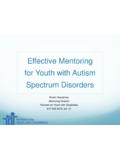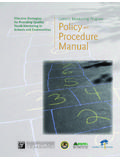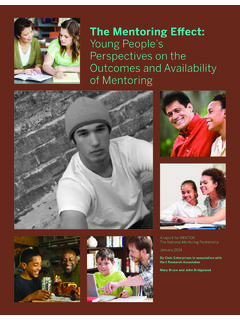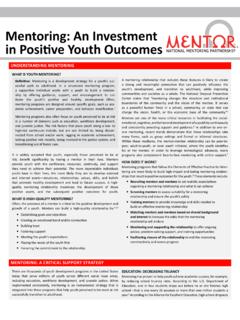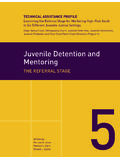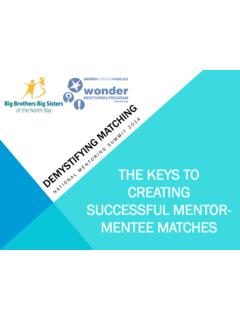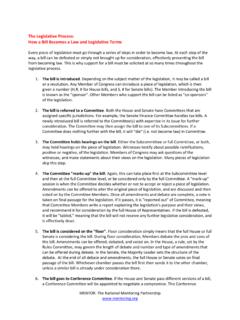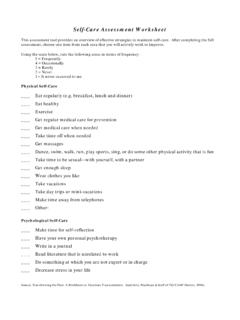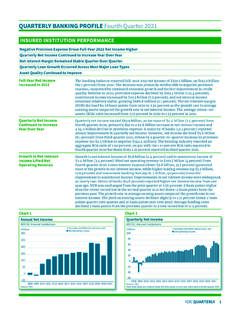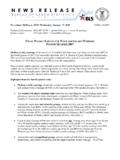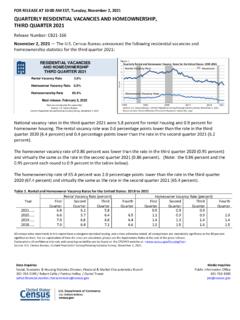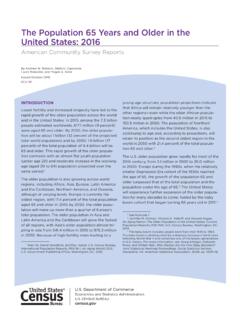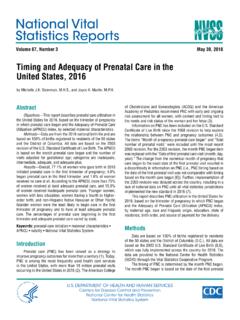Transcription of 4TH EDITION Elements of Effective Practice for Mentoring
1 Elements of Effective Practice for MentoringRESEARCH-INFORMED AND PRACTITIONER-APPROVED BEST practices FOR CREATING AND SUSTAINING IMPACTFUL Mentoring RELATIONSHIPS AND STRONG PROGRAM SERVICES4TH EDITION Photo courtesy of First NiagaraTHE Elements WERE SUPPORTED BY A GENEROUSGRANT FROM THE METLIFE COMMITTEE Michael Garringer, MENTOR Dr. Janis Kupersmidt, innovation Research & Training Dr. Jean Rhodes, Center for Evidence-Based Mentoring , University of Massachusetts Boston Dr. Rebecca Stelter, innovation Research & Training Tammy Tai, MENTORADVISORY COMMITTEEThe Steering Committee would like to thank the members of the Elements of Effective Practice for Mentoring Advisory Committee for their assistance in reviewing and strengthening the Benchmarks and Enhancements throughout this EDITION . This resource would not have been possible without their expertise and support.
2 Heather Clawson Communities in Schools Sue Anne Endelman Mass Mentoring Partnership Janet Heubach Mentoring Works Washington Celeste Janssen Institute for Youth Success Dr. Michael Karcher University of Texas San Antonio Sarah Kremer Independent consultant (formerly of Friends for Youth) Kristin Romens Big Brothers Big Sisters of America Dr. Sarah Schwartz University of Massachusetts Boston Dr. Renee Spencer Boston UniversityCOPYRIGHT INFORMATION 2015 MENTORivElements of Effective Practice for MentoringRESEARCH-INFORMED AND PRACTITIONER-APPROVED BEST practices FOR CREATING AND SUSTAINING IMPACTFUL Mentoring RELATIONSHIPS AND STRONG PROGRAM SERVICES4TH EDITION Elements OF Effective Practice FOR Mentoring vPROGRAM PLANNING AND MANAGEMENT1 STANDARD 1: RECRUITMENTSTANDARD 2: SCREENINGSTANDARD 3: TRAININGSTANDARD 4: MATCHING AND INITIATINGSTANDARD 5: MONITORING AND SUPPORTSTANDARD 6: CLOSURE10243454607076 ABOUT THE 4TH EDITIONINTRODUCTIONPROGRAM PLANNING AND MANAGEMENT42 Photo courtesy of Mentoring Works WashingtonELEMENTS OF Effective Practice FOR Mentoring 2 INTRODUCTIONIn 2015, MENTOR celebrates 25 years of serving as the unifying champion for the youth Mentoring movement.
3 Over this quarter century, MENTOR has led a series of signature initiatives to continuously improve our nation s ability to meet the Mentoring needs of all young people creation and coordination of National Mentoring Month, an annual campaign endorsed by every President since 2002; successful advocacy for increased public and private investments in the field; and the support and expansion of a national network of affiliate Mentoring Partnerships that provide leadership at the local level. The Elements of Effective Practice for Mentoring is the cornerstone of all of our efforts, developed and disseminated to ensure that as the quantity of Mentoring grows, quality remains front and center. The Elements are widely accepted as the national and global standards for quality youth Mentoring . The very first EDITION of the Elements was created in 1990, when a coalition of youth-serving organizations came together to discuss service-delivery strategies and emerging best practices in the rapidly expanding youth Mentoring arena.
4 These organizations, convened by MENTOR and United Way of America, each approached Mentoring from slightly different perspectives and utilized mentors in a variety of settings and contexts. Yet they had a common and pressing concern: How to ensure that Mentoring programs offered their services in a responsible way, one that met the needs of both youth and volunteers while also ensuring participant safety and positive outcomes for young people and communities. To meet this need, they developed a set of guidelines, or common principles 1 to help guide the development of quality Mentoring programs across the country and support the growing field of Mentoring professionals. This ethos continues in the Elements today the guidelines presented here are intended to be applicable across almost every type of program to help ensure that the youth Mentoring relationships are safe, Effective , and well-managed to produce positive outcomes for the young people involved.
5 The third EDITION of the Elements , released in 2009, further invested in this notion of quality by diving deeply into the existing research on youth Mentoring to find evidence of program practices and relationship strategies that facilitate meaningful Mentoring relationships and positive outcomes for youth and adult participants. This was the first attempt to ensure that the core benchmarks of program quality were grounded in the best research available. 3 INTRODUCTIONThe fourth EDITION reinforces this application of research our Steering Committee reviewed over 400 peer-reviewed journal articles and research reports, placing particular emphasis on research released since the third EDITION in 2009. And because research and Practice must always be complementary, we also relied on the real-life experience and input of over 200 practitioners and Mentoring organizations. The end result is a document that reflects the best and most up-to-date thinking our field has to offer.
6 It represents 25 years of evolution at MENTOR and in the Mentoring field, and the continuous refinement of practices aimed at ensuring Mentoring relationships deliver on the promise of being a powerfully driver of support and opportunity for young people of all ages. Mentoring continues to grow in diverse directions and is embedded into myriad program contexts and services. The fourth EDITION of the Elements of Effective Practice for Mentoring is intended to give this generation of practitioners a set of programmatic standards that will empower every agency and organization, and raise the bar on what quality Mentoring services look like. We hope this EDITION benefits programs of all sizes and funders from every sector in creating, sustaining, and improving Mentoring relationships because they are critical assets in young people s ability to thrive and strive. David Shapiro President and CEO, MENTORMike Garringer Director of Knowledge Management, MENTOR 1 National Mentoring Working Group.
7 (1990). Elements of Effective Practice . Philadelphia, PA: United Way of OF Effective Practice FOR Mentoring 4 ABOUT THE 4TH EDITIONDEVELOPMENTFor the fourth EDITION of the Elements of Effective Practice for Mentoring , the Steering Committee had several goals in mind: Reviewing new research to identify potential best practices and promising innovations in service delivery Engaging a wide variety of Mentoring program staff members, researchers, and technical assistance providers to ensure that the new EDITION reflected the best current ideas and trends in the field Revising old Benchmarks and Enhancements with updated information and research, while creating entirely new Benchmarks and Enhancements to keep pace with innovations in programming that have emergedTo meet these goals, our Steering Committee comprised of representatives from MENTOR, the University of Massachusetts-Boston and MENTOR Center for Evidence-Based Mentoring (CEBM), and innovation Research & Training (iRT) undertook the following process starting in the Fall of 2014: 1.
8 Conducting a literature review. This review consisted of over 400 peer-reviewed journal articles and organizational research reports. We emphasized the findings of over 80 research articles published since the release of the third EDITION of the Elements . (A full description of our research methodology is available at the end of this document.)2. Developing a first draft. The new research was the basis for the first draft. Old Benchmarks and Enhancements were revised or eliminated, while new ones were developed, as Reflecting and refining with an Advisory Committee. A select group of researchers, practitioners, and representatives from MENTOR s network of affiliate Mentoring Partnerships reviewed each section, providing input on the accuracy and comprehensiveness of cited research and ensuring that the recommendations for Practice addressed child safety concerns and were achievable by Engaging a broader set of stakeholders.
9 A second draft was reviewed by over 70 attendees of a Short Course on the new Elements that was sponsored by the Center for Evidence-Based Mentoring and MENTOR and held at the 2015 National Mentoring Summit. A subsequent draft was presented in a web conference to the entire Mentoring Partnership network to ensure that the new practices fit the expertise and experiences of these leading technical assistance providers. 5. Finalizing and approval. The Advisory Committee met one last time in the spring of 2015 to provide their final input on the version presented THE 4TH EDITIONThe end result is a fourth EDITION that contains more nuance around the delivery of Mentoring services, as well as a greater emphasis on youth and parent voices in the Mentoring relationship. We have also emphasized the safety of the young person, with several new Benchmarks and Enhancements added to ensure that screening, relationship monitoring, and match closure are handled in a way that maximizes youth safety.
10 This EDITION blends the latest research with the best practitioner wisdom and input, and should provide Mentoring programs of all types with a roadmap for how to strengthen their services. We also encourage policymakers and funders to use the Elements as standards when making decisions about supporting youth Mentoring programs or integrating mentors into broader youth development efforts. USING THIS RESOURCEAs with the third EDITION , the fourth is primarily built around six core Standards of Practice : 1) Recruitment, 2) Screening, 3) Training, 4) Matching and Initiation, 5) Monitoring and Support, and 6) Closure. These Standards cover the aspects of Mentoring programs that directly support their Mentoring relationships. We have also provided a Program Planning and Management section that offers recommendations for designing and strengthening youth Mentoring services and providing high-quality oversight and leadership.

